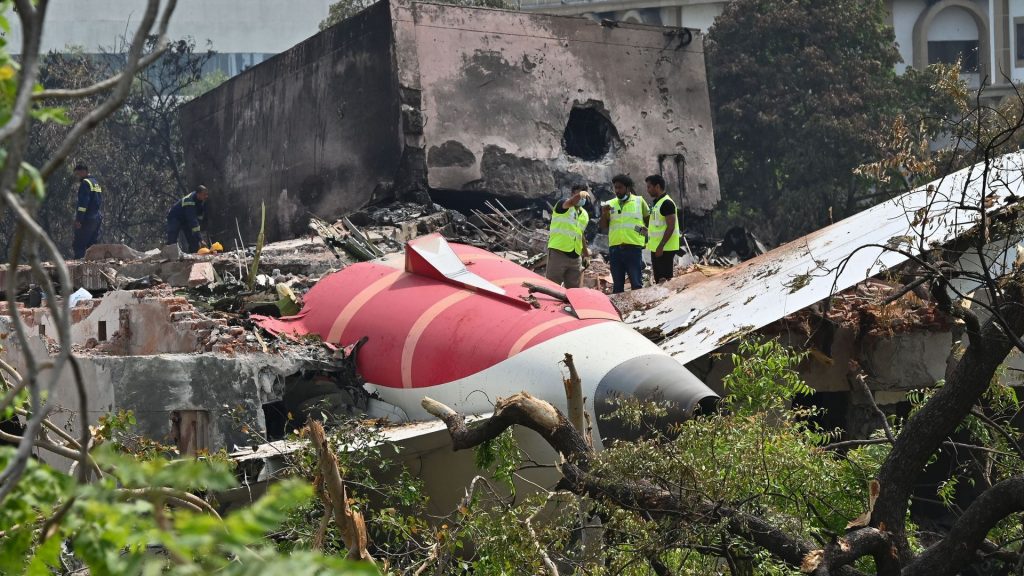Recordings reveal captain shut off fuel switches before Air India crash: Report

More details are emerging from the investigation into June’s deadly Air India crash. A black-box recording of the flight’s two pilots reveals the captain turned off switches that controlled the fuel flowing to the aircraft’s two engines, as first reported by The Wall Street Journal on Wednesday, July 16.
The new findings
Sources familiar with the U.S. officials’ early assessment of the evidence told the Journal that the first officer flying the Boeing 787 Dreamliner questioned the senior captain about why he had switched off the fuel flow as the plane took off and climbed. The first officer reportedly expressed shock and then alarm as the captain “seemed to remain calm.”
A preliminary finding from the investigation, released during the week of July 6, summarized the recording but didn’t clearly identify which pilot was speaking during the exchange. The report from India’s Aircraft Accident Investigation Bureau noted that one pilot asked the other why he’d moved the switches to the “cutoff” position, while the other pilot denied having done so.
Revelations in that report also strongly suggest it was the captain who turned off the fuel switches, according to sources familiar with the matter. The report, however, stopped short of concluding whether it was intentional or accidental.
Why it matters
The new findings may lead to a better understanding of how the tragic events of the June 12 crash unfolded.
The captain, identified as Sumeet Sabharwal, had decades of experience, while the copilot, identified as Clive Kunder, was relatively early in his career.
According to the Journal, Kunder would have most likely “had his hands full pulling back on the Dreamliner’s controls” during takeoff, while Sabharwal, the one in charge of overseeing operations, “would have been more likely to have had his hands free.”
The report shows the fuel switches were moved one second apart – and approximately 10 seconds later, the switches were both back on. The jetliner crashed shortly after takeoff near Ahmedabad airport, killing 242 people. There was only one survivor.
The initial data has prompted some U.S. officials to call for a criminal investigation into the crash.
Some experts suggest a deliberate act
A former senior NTSB official who assisted in the U.S.-led probe into the crash of EgyptAir Flight 990 in 1999, Ben Berman, told the Journal that the preliminary report, which shows that the fuel switches were shut off in succession, just one second apart, indicates a deliberate action.
Berman added that, prior to the fuel shutoff, there was no indication of trouble during what should have been a routine takeoff and ascent.
“There was nothing to prompt the crew to perform emergency procedures, become stressed, or do anything except rotate the nose up and retract the landing gear, like they had done so many times before,” Berman told the Journal.
Unbiased. Straight Facts.TM
Of the 241 people on board when an Air India plane crashed on June 12, only one survived. He reportedly “walked away” from the wreckage before being treated at a hospital.
Investigators push back against early conclusions
However, the preliminary report did not reach any definitive conclusion about what exactly led to the crash or why the fuel switches were shut off. The report does not rule out potential design flaws or equipment issues as potential factors in the aviation disaster. Investigators are also being assisted by aviation medicine and psychology experts.
The chief executive of Air India, Campbell Wilson, has called on airline staff to refrain from drawing early conclusions about the tragedy and described the investigation as “far from over.” A representative for the airline said Air India is continuing to cooperate with the ongoing investigation.
When pressed for comment on the Journal’s report about the pilots, a press officer for India’s Ministry of Civil Aviation and Aircraft Accident Investigation Bureau declined to elaborate.
The ongoing probe
As the Journal notes, aviation crashes potentially involving deliberate actions are especially hard to solve because of incomplete data and disputed interpretations. Such investigations can often take a year or longer, and final information that emerges can sometimes contradict early findings.
Cockpit recordings have been tightly controlled by Indian investigators and are seen as a key to uncovering the series of events that happened in the flight’s tragic final moments.
NTSB Chair Jennifer Homendy has reportedly been fully briefed on the details of the investigation, including cockpit recordings and data from the flight’s data recorder. Homendy said her aim is to quickly find out “whether the crash presented any immediate safety concerns to the traveling public.”
Boeing and the Federal Aviation Administration have not issued any advisories or safety directives to 787 Dreamliner operators in response to the crash.





